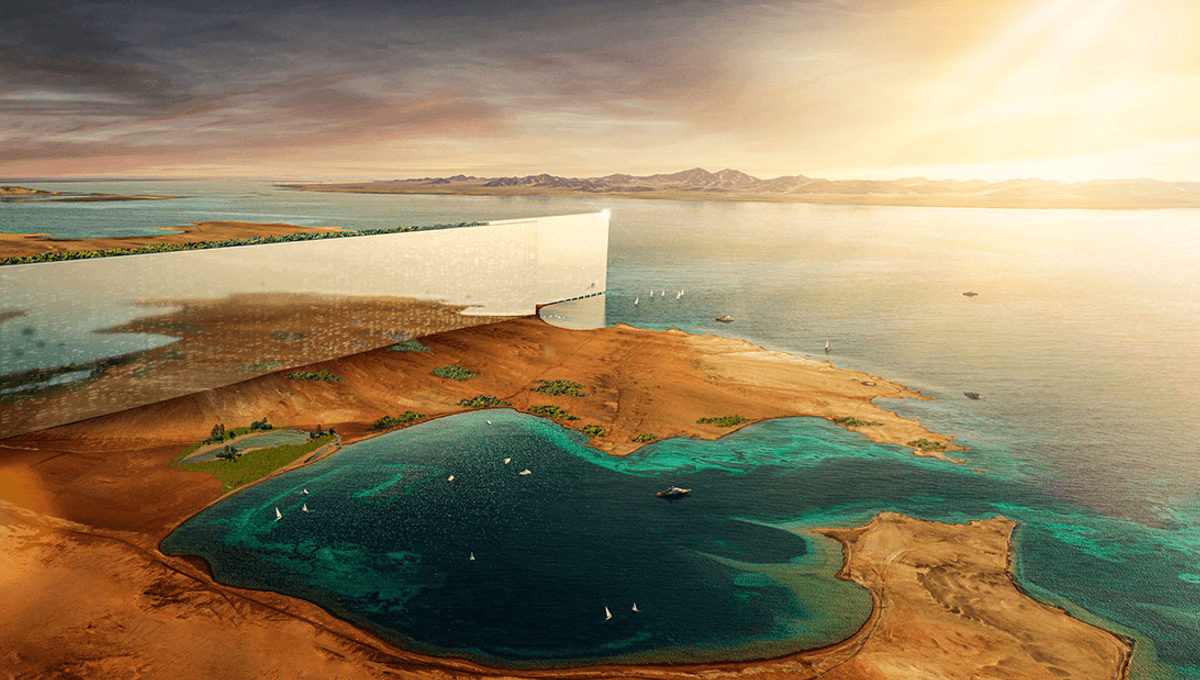
Saudi Arabia, for reasons that seem to boil down to “it will look cool”, has plans to build a 170-kilometer (105-mile) long mirrored skyscraper across the desert near the Suez Canal.
“The Line” is to be part of a new high-tech city named NEOM. The idea is that the planned 9 million residents of the skyscraper will be able to access all the facilities they need within a five-minute journey, while a high-speed train will also shuttle people from one end to the other in 20 minutes.
“At The Line’s launch last year, we committed to a civilizational revolution that puts humans first based on a radical change in urban planning. The designs revealed today for the city’s vertically layered communities will challenge the traditional flat, horizontal cities and create a model for nature preservation and enhanced human livability. THE LINE will tackle the challenges facing humanity in urban life today and will shine a light on alternative ways to live,” Crown Prince Mohammed bin Salman said when the idea was launched in July 2022.
“We cannot ignore the livability and environmental crises facing our world’s cities, and NEOM is at the forefront of delivering new and imaginative solutions to address these issues.”
A new paper, however, has outlined why The Line is a terrible idea, while also proposing an easy fix: turning the line into a circle.
While facilities may be within five-minute distances in The Line, the design makes visiting work, schools, and other people incredibly inefficient, forcing people into long commutes and diminishing their quality of life.
“If its 9 million inhabitants are homogeneously distributed in the city, each [kilometer] will have roughly 53,000 people. If we randomly pick two people from the city, they will be, on average, 57 km [35 miles] apart. Although The Line occupies only 2 percent of the surface of Johannesburg, if we pick two random people in Johannesburg, they are only 33 km [20 miles] apart,” the team explains in their paper.
“Keeping the surface fixed, a line is the contiguous urban form that maximises the distance between its inhabitants. In The Line, people are as far away from others as possible.”
Looking further into the transport situation, the team estimates that traveling from one random location in The Line to another would take over 60 minutes, even with 86 train stations distributed throughout the complex.
“Regardless of the number of stations on The Line, at least 47 percent of the population will have a commute longer than 60 min so most people will live too far from their destination.”
The team from the Complexity Science Hub also has concerns about energy consumption, with taller buildings requiring more energy than more environmentally friendly medium-sized buildings. Rather than simply pointing out problems, they also proposed fixing the situation by bending the line around.
“A circle that occupies the same surface as The Line (34 km2 [13 square miles]) has a radius of only 3.3 km [2 miles],” the team wrote. “In The Circle, the expected distance between two random people is only 2.9 km. In The Circle, a person is at a walking distance of 24 percent of the population (and within 2 km [1.2 miles], they could reach 66 percent of the destinations), so most of their mobility could be active.”
The Circle would make high-speed rail redundant, as residents could walk or cycle most of the journeys, and take buses for the rest. The team acknowledges that building The Circle would be even more challenging than The Line, but if you’re going to build a big (and slightly ridiculous) project in the desert, it might be worth making the extra effort to make that complex livable for its residents.
The study is published in NPJ Urban Sustainability.
Source Link: Paper Outlines Why Saudi Arabia's "The Line" Is Mathematically A Terrible Idea